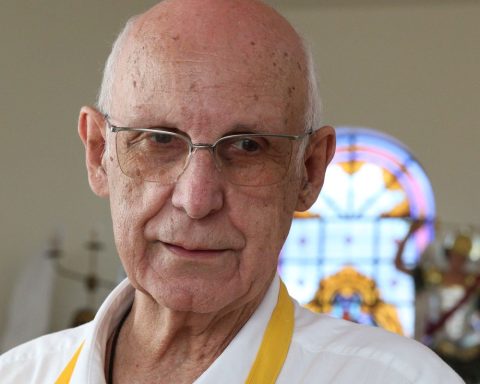HARRISONBURG, United States. — This Saturday, April 22, Cienfuegos turns 204 years old. It is the only Cuban city founded by French settlers and is characterized by the neoclassical design of important buildings, the straightness of its streets and its wide stock market bay, one of the best in the country.
To Cienfuegos he sang the Benny More and then other singers and troubadours from the terroir did, but there is a song that has become the quintessential musical work of the people of Cienfuegos. Anyone who claims to be a good son of Fernandina de Jagua knows that I mean the song Cienfuegos moon.
Contrary to what thousands of compatriots have done throughout history —especially after 1959—, instead of emigrating to Havana, I went in the opposite direction to Guantanamo in the now distant year of 1985.
I was 27 years old then and I deeply loved my city. I liked walking its streets, admiring its buildings and that peculiar shape of the reflections of sunlight in the bay during the afternoons. Those tours took me to the José Martí park —one of the largest in Cuba and which, together with the surrounding buildings, has been declared a World Heritage Site by UNESCO— as well as to the bay boardwalk and even a little further. there, at the Punta Gorda roundabout, near the Jagua hotel and the imposing landscape of the eastern part of the bay, with the Escambray in the background.
I also liked to walk over and over again the beautiful Paseo del Prado, the longest in Cuba, or arrive unexpectedly at the house of my friends, today almost all of them are scattered around the world.
When I arrived in Guantánamo, I felt for the first time in my life what uprooting was, and although I always wanted to return to my city, I was never able to. Today everything indicates that I will have to continue loving her in memory.
And in that memory there are many evocations that time has not been able to destroy. One is that moment of sunset near Los Pinitos, when the sea calmly crashes against the shore in a refrain that seems silent and concomitantly also seems to tell us a lot about our ephemeral passage through the world. the other is the song Cienfuegos moon.
The work was composed by Jose Ramon Muñiz Carballo in the decade of the forties of the last century and performed for the first time in public on December 7, 1947, during a patriotic evening organized by the Ateneo de Cienfuegos to honor the martyrs of our independence. Its interpretation was in charge of Idalmis García, exclusive artist of the chain CMQ Radiowho was accompanied on piano by the renowned Cuban musician Antonio María Romeu.
It is known that during the cold night of January 17, 1949, the song was again performed publicly by the Municipal Concert Band. From then on, it began to be recognized for the elegant apprehension of various distinctive elements of our city and for the indisputable beauty of its poetry, only appraised in its essence by those who have been able to enjoy a full moon over the Cienfuegos bay.
In the decade of the fifties of the last century, the interpretation made by the Conjunto Casino in the voice of its famous interpreter Roberto Espí achieved notoriety. Later, the work was interpreted by Ñico Membiela, the Los Naranjos Group and the Sierra Maestra group, among others.
It is said that José Ramón Muñiz, a native of the town of Aguada de Pasajeros, began working in Cienfuegos as a Customs inspector and often had to spend nights and early mornings at the docks. One of those early mornings the song sprouted unstoppably while Muñíz watched the lights of the small shrimp boats recede. Lacking paper and pencil, the poet wrote the lyrics on a board with the help of a piece of charcoal while he repeated the melody to capture it definitively.
I had the opportunity to meet Muñiz at the beginning of the 1970s, in one of the unforgettable sessions of the literary workshop directed by Juan René Cabrera at the headquarters of the Roberto García Valdés municipal library. He, along with other local poets such as Frankenstein, Porres Reyes, Florentino Morales, René Espinoza, Luis Gómez and Juan René Cabrera himself, often met in the park around Samuel Feijóo to improvise those gatherings that aroused so much curiosity in me and that due to shyness I could never enjoy closely.
Although Muñiz left Cuba in 1980 and settled in the city of Miami, his song was silenced for many years, until the cultural authorities of Castroism decided to broadcast it again on Radio City of the Sea. Now they have come to describe it as an unequivocal sign of the city, something that, without a doubt, always was and that does not need anyone’s pronouncement.
Beyond musical fashions, Cienfuegos moon It continues to captivate those of us who consider that art’s main function is to captivate and make our spirit grow, not muddy it with bad words and profane expressions as some who call themselves singers believe.
It is a song that is undoubtedly made for all genuine Cienfuegos to carry in their souls.
OPINION ARTICLE
The opinions expressed in this article are the sole responsibility of the person who issues them and do not necessarily represent the opinion of CubaNet.















